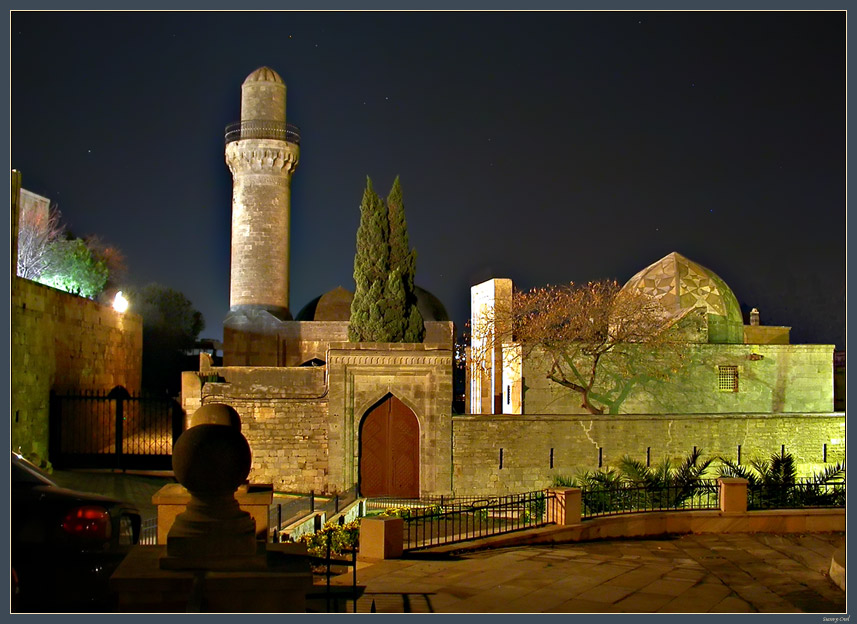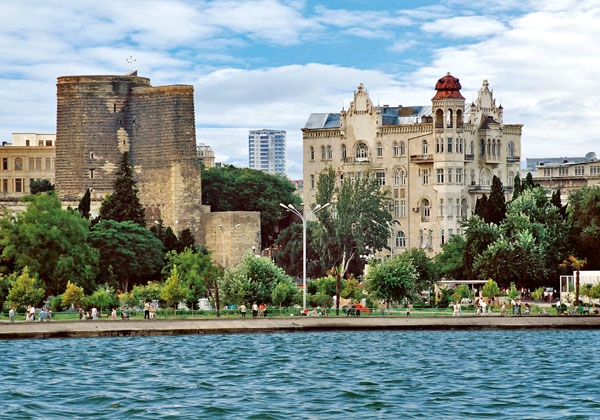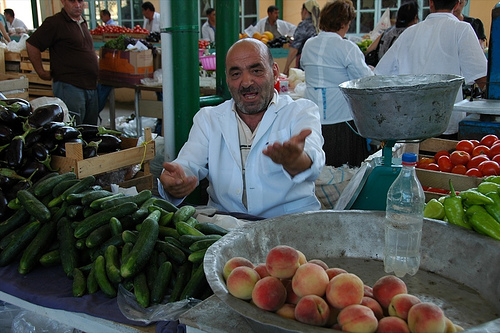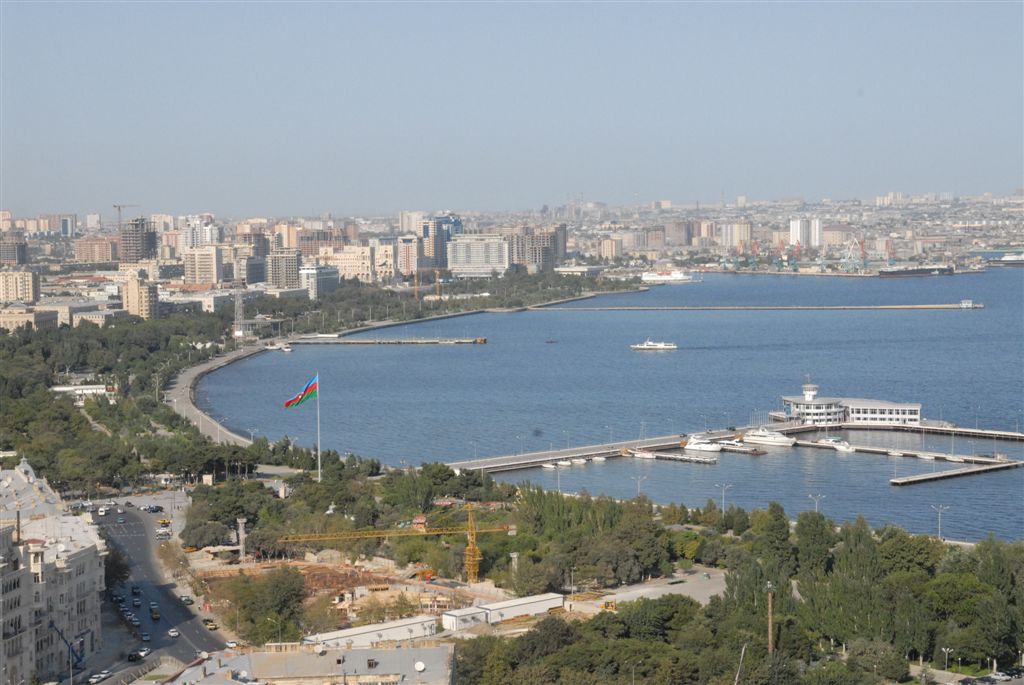Relatively low crime, the local hospitality, a mild Mediterranean-like climate, and a high density of quality restaurants, bars and nightclubs make Baku an attractive destination. One of the Soviet capitals not long ago, Baku is changing at breakneck speed. The Stalin-era buildings have long given way to shiny new skyscrapers and towering business centres. Those buildings still standing have been given a facelift, hidden behind new facades, like veneer teeth.
But glitzy architecture isn’t all Baku is known for. The epicenter of a booming oil and gas industry, Baku was considered sacred by Zoroastrians – fire worshippers – for the flames bursting through its oil-rich land. The oil and gas have been the city’s blessing and its curse for all the times.
5 THINGS TO DO IN BAKU
1. Visit the inner city and its ancient icons Recognised by UNESCO as a World Heritage Site is the walled inner city of Baku, with the Shirvanshah’s Palace and the Maiden Tower. Built in the 12th century, the walls of the inner city – Icheri Shekher – enclose medieval courtyards and narrow cobbled streets, now crowded with cafes and carpet shops.
Recognised by UNESCO as a World Heritage Site is the walled inner city of Baku, with the Shirvanshah’s Palace and the Maiden Tower. Built in the 12th century, the walls of the inner city – Icheri Shekher – enclose medieval courtyards and narrow cobbled streets, now crowded with cafes and carpet shops.
Within the walls of the inner city is the Maiden Tower. Of the eight stories of the tower the first three are believed to date back to the 7th or 6th century BC and were used as a fire temple, according to the latest research by UNESCO. If true, this could be the largest Zoroastrian temple in the world.
2. Take a stroll in the city centre and Caspian sea bouleverd Baku is also a phenomenal East-West amalgamation of cultures, languages and religions. And with its architectural and designer life-style excesses next to the crumbling huts of those living on the edge of the city and on the poverty line, Baku is truly a city of contrasts.
Baku is also a phenomenal East-West amalgamation of cultures, languages and religions. And with its architectural and designer life-style excesses next to the crumbling huts of those living on the edge of the city and on the poverty line, Baku is truly a city of contrasts.
Baku is proud of its centuries of heritage and traditions, its tea houses, theatres, opera hall and high quality jazz clubs.
Baku’s architecture isn’t just about glamorous skyscrapers. Back in the early 1900s Baku boasted delicate Parisian architecture combined with other European styles. Some of these buildings are still embraced by intertwining vine trees, heavy in September with purplish red and crispy white grapes.
3. Check rock art of Gobustan and odd mud volcanoes Located 60 km south of Baku the rocks of Gobustan encompass over 60,000 mountain carvings. The oldest carvings can be dated back to 14 millennia BC. Serving as a visual timeline, they depict armed hunters with dogs, and life-size bulls which are now extinct, proving that civilisation in Azerbaijan has existed for at least 126,000 years.
Located 60 km south of Baku the rocks of Gobustan encompass over 60,000 mountain carvings. The oldest carvings can be dated back to 14 millennia BC. Serving as a visual timeline, they depict armed hunters with dogs, and life-size bulls which are now extinct, proving that civilisation in Azerbaijan has existed for at least 126,000 years.
Depictions of boats, similar to those used by the Vikings, led the Norwegian ethnographer Thor Heyerdahl to conclude that Scandinavian ancestors came from this region, and drawings of caravans and camels persuaded experts that Gobustan was once a part of the Silk Route.
Since 2007 Gobustan has been officially recognised as a rock-art landscape by UNESCO. If happens to be there don't miss an opportunity to see amazing nature miracles - mud volcanoes. Though not unique, Azerbaijan has more of these odd 'creatures' than any other country in the world (300+ groups on land plus hundreds more offshore where they sometimes rise to form islands in the shallow coastal waters). The most interesting active groups are in Gobustan.
4. Meander around the Teze Bazar Like in many Middle Eastern cultures, the bazaar is the place where things happen. Bursting with seasonal and local produce they breathe, buzz and heave with the city’s life, luring in customers to purchase the juiciest melons, sweet-scented peaches and pungent pieces of cheese, straight from sheepskin parcels or sacks.
Like in many Middle Eastern cultures, the bazaar is the place where things happen. Bursting with seasonal and local produce they breathe, buzz and heave with the city’s life, luring in customers to purchase the juiciest melons, sweet-scented peaches and pungent pieces of cheese, straight from sheepskin parcels or sacks.
The market traders will slice, chop and peel any of their produce and thrust it into passing customers’ hands, pleading with them to stop and taste out-of-this-world food. For a sneaky taste of Beluga caviar head to Teze Bazar and keep a good hold of your purse.
5. Climb to Shahidlar Xiyabani (Martyr's Lane) High above the city centre's southwest corner lies the sombre memorial, Shahidlar Xiyabani (Martyr's Lane) of Bakuvian victims of the Red Army's 1990 attack. Those martyrs were swiftly joined by many more Azeris who died in the Karabakh conflict. A small memorial to British and Commonwealth troops killed around Baku during WWI has been erected nearby, causing considerable controversy. After all, the British had been sent to prevent the Turkish invasion which most Azeris supported.
High above the city centre's southwest corner lies the sombre memorial, Shahidlar Xiyabani (Martyr's Lane) of Bakuvian victims of the Red Army's 1990 attack. Those martyrs were swiftly joined by many more Azeris who died in the Karabakh conflict. A small memorial to British and Commonwealth troops killed around Baku during WWI has been erected nearby, causing considerable controversy. After all, the British had been sent to prevent the Turkish invasion which most Azeris supported.
Shahidlar Xiyabani has a fine new Turkish-style mosque and at the edge of the gardens there's a viewpoint offering some splendid views across the bay and city. Get there by funicular from the sea front.
Important information on visa: If you're going to vizit Azerbaijan check the latest information of visa regime here >>>. Regularly updated data, helpful advice and expert guidance from licensed travel agency. If you have any questions, please do not hesitate to contact us.



